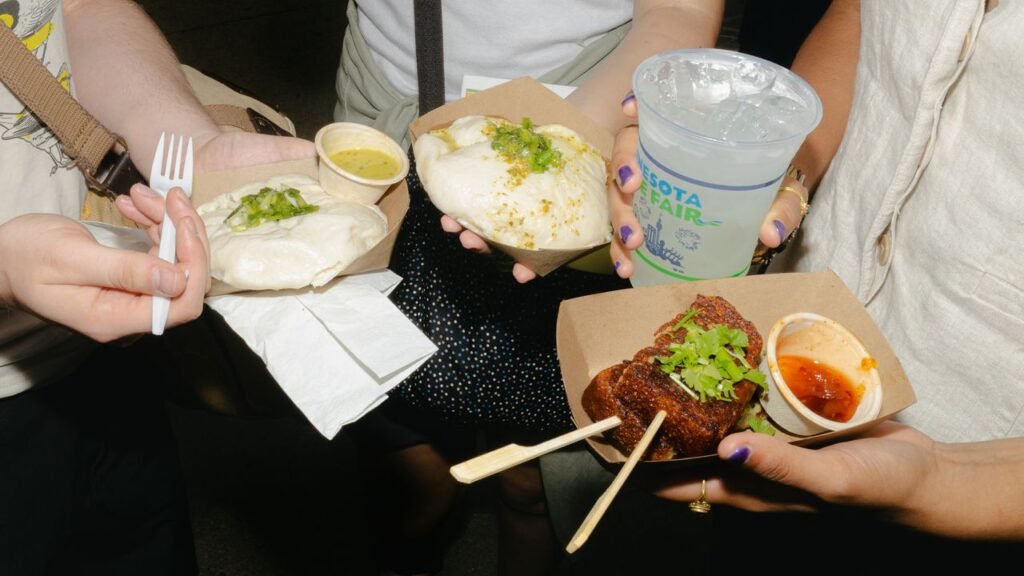Today, institutions rule Minnesota’s fair: Sweet Martha’s Cookie Jar, founded in 1979, grossed a whopping $4.9 million in twelve days last year, and Pronto Pup, which debuted in 1947, sparked Minnesota’s obsession with skewered foods. But some of the longest lines also belong to immigrant-owned businesses constantly releasing new food items, such as Somali sambusas, Hmong galabao, and Vietnamese egg rolls on a stick. Their inclusion in the fair is a reflection of broader shifts in the state, too. According to the US Census, the number of international migrants coming to Minnesota nearly doubled from 2023 to 2024.
But when did state fair food get so zany? Deep-frying and skewering are not novel concepts, but the shift was turbocharged in 2005, when Texas began crowning the most creative and best-tasting inventions. Karissa Condoianis, who runs public relations for the fair, says the first Big Tex Choice Awards garnered international press. “It’s really those top new foods at the State Fair [that] set the bar for our industry each year.” Deep-fried pho, Cuban rolls, and even jambalaya have all taken top honors. Since then, other fairs have followed suit, releasing their own lists that ripple through local media and social platforms every August.
Maya Omar, a Minneapolis resident and longtime fairgoer, was thrilled to see Somali street fries—a riff on suqaar, a Somali beef dish: “This is the first time I’ve ever heard Somali street food being introduced to the fair.”
Yia Vang, chef-owner of Vinai and one of Minneapolis’s most celebrated chefs, opened Union Hmong Kitchen, the fair’s first Hmong food stall, in 2022. This year, he offered pork and shrimp laced with lemongrass, fish sauce, and Thai chilis on Texas toast, which, unsurprisingly, went on a stick: “It’s always about one good bite. I want people to taste this and then get curious enough to learn more about Hmong food.”
For Vang, the fair’s original mission is a reminder of his own journey: His family fled Laos, lived in a Thai refugee camp, and eventually settled in Wisconsin. “The fair started with the idea of farmers coming together and helping each other grow within the state,” he says.
Danielle Dullinger, the fair’s food and beverage manager who scouts potential vendors every year and encourages them to apply, puts Vang’s influence more plainly: “Someone from Ely, Minnesota, perhaps has never tried Hmong food. How cool that they can come here and try the best parts of our state?”
Beyond the Fairgrounds
As curiosity about the state fair grows and goes viral on social media, even the Smithsonian has taken notice. This summer, the Renwick Gallery in Washington, D.C. unveiled State Fairs: Growing American Craft, the first national exhibition to spotlight artists’ contributions to the fairgrounds. Savig, who grew up attending Minnesota’s state fair, pitched the idea during her job interview five years ago. “We wanted to show that craft is everywhere on the fairgrounds—and experimental food is certainly a part of that.”


